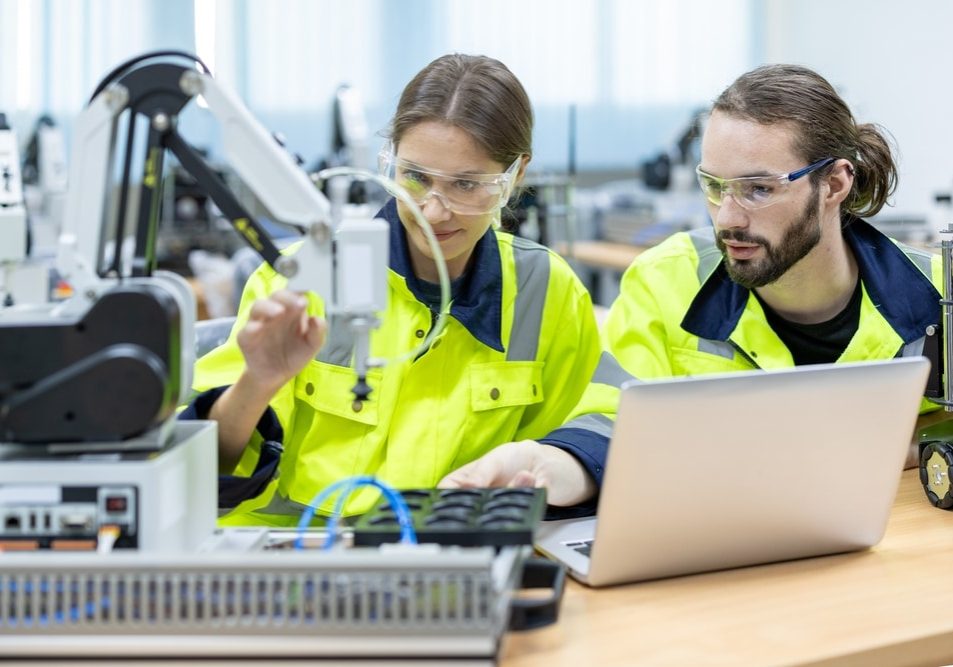I. Introduction
In today's rapidly changing world, the landscape of workforce development is undergoing significant transformation. As businesses recover from economic uncertainty and adapt to technological advancements, the skills required for success are evolving at an unprecedented pace. The manufacturing sector, in particular, requires a keen understanding of these changes to stay competitive.
Identifying the key skills necessary for the next decade is essential for aligning workforce development strategies with the demands of the future. This post explores the evolving workforce landscape, highlights critical skills for business owners to focus on, and offers practical strategies for successfully navigating the next decade.

II. The Changing Landscape of Work
The nature of work is evolving due to various factors, including technological advancements, shifting economic conditions, and changing worker expectations. Some of the trends influencing workforce development include:
Digital Transformation
The rise of digital technologies is reshaping job roles across the manufacturing industry, resulting in a demand for workers proficient in using advanced tools and software.
Remote and Hybrid Work Models
The COVID-19 pandemic has significantly increased remote work, altering how businesses operate and requiring new skills in communication and self-management.
Automation and AI Integration
Automation is streamlining manufacturing processes, necessitating a workforce skilled in managing and working alongside advanced technologies.
Industries such as manufacturing, healthcare, and information technology are experiencing the most noticeable transformations. Business owners must be aware of these shifts and adapt their workforce development strategies accordingly to maintain a competitive edge.
III. Critical Skills for the Next Decade
To thrive in the next decade, manufacturers must focus on developing both technical and soft skills within their workforce. Here are the critical skills that will define workforce development in the coming years:
Digital Literacy and Technological Proficiency
Understanding and utilizing technology will become essential. Workers need to be comfortable with digital tools and platforms that drive operational efficiency.
Specific in-demand technical skills include:
- Data Analytics: The ability to collect, analyze, and interpret data to make informed decisions.
- Programming: Knowledge of coding languages to develop and maintain software and applications.
- Cybersecurity: Protecting sensitive data and systems from cyber threats is increasingly crucial as businesses rely on technology.
Investing in training programs that emphasize the development of these technical skills will prepare the workforce for future demands.
The Growing Importance of Interpersonal Skills
Soft skills are becoming essential for success in the modern workplace. While technical expertise is vital, the ability to communicate and collaborate effectively is equally important.
Key soft skills to focus on include:
- Communication: Clear and effective communication fosters collaboration and minimizes misunderstandings.
- Adaptability: Workers must be agile in adjusting to the ever-changing demands of the manufacturing landscape.
- Problem-Solving: The ability to identify challenges and develop innovative solutions is crucial for maintaining operational efficiency.
Cultivating a workforce that values both technical and soft skills ensures a more resilient and adaptive organization.
Innovation and Creativity for Growth
- As the manufacturing industry continues to evolve, creativity will play a vital role in driving innovation.
- Employers should encourage employees to think outside the box and explore new ideas to optimize processes and products.
Industries embracing creative skills will experience increased competitiveness and growth.
The Necessity for Continuous Learning
- The pace of change in technology and industry standards requires workers to engage in lifelong learning.
- Fostering a culture of continuous skill development helps employees remain adaptable and prepared for future challenges.
Strategies for Fostering Lifelong Learning:
- Provide access to online courses and professional development resources.
- Encourage participation in workshops, seminars, and industry conferences.
- Create mentorship programs where experienced employees can share knowledge with newer staff.
IV. The Role of Education and Training Providers
As the demand for specific skills evolves, educational institutions are stepping up to ensure workforce readiness. Here’s how:
- Curriculum Updates: Educational institutions must design curricula that align with the needs of contemporary manufacturing industries, emphasizing both technical and soft skills.
- Collaboration with Industry: Partnerships between businesses and educational providers create targeted training programs that effectively prepare future workers for real-world challenges.
Examples of Effective Training Programs:
- Apprenticeships that blend on-the-job training with classroom instruction, providing hands-on experience.
- Customized workshops that address specific skills gaps identified by manufacturers.

V. The Impact of Policy on Workforce Development
Government policies are crucial in shaping workforce development initiatives. Here are key areas where policy can make a difference:
- Support for Training Programs: Legislation that promotes funding for vocational training and workforce development helps companies access the training resources they need.
- Government Incentives: Policies that offer tax credits or other incentives for investing in employee training programs encourage business owners to prioritize workforce development.
Future Policy Directions:
- Governments are increasingly focusing on enhancing skill development and providing support for industries facing skill shortages. This could lead to new workforce training initiatives, grant programs, and strategic partnerships aimed at preparing workers for the jobs of the future.
VI. Preparing for the Future: Practical Strategies for Businesses
As business owners consider how to prepare for the future, here are some practical strategies for developing a skilled workforce:
- Invest in Training Programs: Allocate resources to training initiatives that address both technical and soft skills. Options include workshops, online courses, and mentorship programs.
- Foster a Culture of Learning: Encourage employees to pursue personal and professional development. Recognize and reward efforts to learn new skills.
- Leverage Technology for Continuous Learning: Implement learning management systems (LMS) to offer ongoing training and professional development opportunities.
- Encourage Employee Innovation: Create a work environment that values creativity and open dialogue. Allow employees to experiment with new ideas and give them the freedom to propose process improvements.
By incorporating these strategies, manufacturers can build a more skilled, adaptable workforce prepared to meet future challenges head-on.

VII. Conclusion
As we look ahead to the next decade, the importance of workforce development cannot be overstated. Manufacturers must prioritize developing both technical and soft skills within their workforce to adapt to a changing economic and technological landscape. By fostering a culture of lifelong learning, collaborating with education providers, and adapting to policy changes, businesses can prepare their workforce for future demands.
The time to act is now. Business owners who take proactive steps to develop their workforce will not only enhance their competitiveness but also contribute to the overall growth and sustainability of the manufacturing industry in the years to come. Investing in skills today will pave the way for a resilient, innovative, and prosperous future for businesses and their employees.
